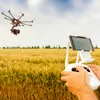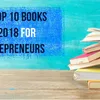15 paths to successful innovation: what we can learn from stories of these 75 iconic innovations
This comprehensive new book offers an array of stories about inspiring innovators. The lessons and tips are useful for entrepreneurs, product developers, marketers, and business professionals.
Over the centuries, our lives have changed for the better, thanks to crazy and not-so-crazy inventors who created new product and service brands. Inspiring – and amusing – stories of these pathbreakers are shared in the new book Iconic Innovations: 75 Business Tales to Help You Find the Next Big Thing by Giles Lury. (The book is also released under the title Inspiring Innovation.)

Giles Lury is the Executive Chairman of marketing agency The Value Engineers. As an innovation consultant, he is sometimes referred to as ‘Director of Deviancy.’ He has written six other books, including Adwatching, The Prisoner and the Penguin, and How Coca-Cola Took Over the World.
The material is spread across 250 pages, and makes for an informative and entertaining read. Each innovation is profiled in just two or three pages, but what they lack in depth, they make up for in breadth and variety.
Here are my key takeaways from the book with respect to innovation paths, summarised in the fifteen sections below. See also my reviews of the related books Quirky, Fifty Things that Made the Modern Economy, Frugal Innovation, The Creative Curve, The Prosperity Paradox, Cross-Industry Innovation, and No Shortcuts.
1. Solve problems for yourself (or your loved ones)
Problems can be a source of opportunity. “Solving someone’s problem is a well-used path to innovation,” the author explains. Necessity is the mother of invention, and spotting problems can lead to a wide range of creative solutions.
For example, Frank McNamara got the idea to co-found Diners Club credit cards in 1950 when he once had to pay a restaurant bill but realised he did not have cash in his pocket. In the late 1960s, John Adrian Shepherd-Barron hit upon the idea to create ATMs to solve the problems he faced of being unable to go to the bank during office hours to withdraw cash. His model of cash dispensers was inspired by chocolate-bar vending machines.
American Roy Raymond created Victoria’s Secret to solve the problem men like himself faced when they tried to buy lingerie for women. He created stores with a comfortable experience along with an element of seduction.
Alfred Bird created egg-free custard (Bird’s Powdered Custard) for his wife, who would get indigestion from egg-based custards. He later came up with a yeast substitute, which was named as baking powder.
Will King solved his ‘razor burn’ problem by combing shaving foam with his girlfriend’s baby oil, to create the ‘King of Shaves’ gel. He managed to get it listed in Harrod’s and then at Boots. The gel is now the third-largest shaving brand in the UK.
Will Shu was frustrated at not being able to get quality food delivered by restaurants to his home in London, unlike his earlier experience in New York. He founded Deliveroo in 2013 to fill this gap. The startup is now worth $2 billion and operates in 84 cities in a range of countries.
Rubber factory owners Edouard and Andre Michelin spotted repair problems with Dupont pneumatic tyres, and created a removable version that did not need to be glued to the rim. The tyres are now made not just for bikes but cars, trains, and planes.
Sara Blakely had issues with existing pantyhose offerings, and launched the Spanx line of shapewear cut off above the ankles. Thanks to retail channel distributions and aggressive marketing, she is now the world’s youngest female self-made billionaire.
German doctor Klaus Martens injured his ankle while skiing in the Alps in 1945, but could not find comfortable shoes to wear. He launched a line of shoes with air-padded soles. UK manufacturing rights were acquired by the Griggs Group, and the boots were launched as the successful AirWair footwear.
2. Inspiration from culture
Travel and exposure to global cultures are a great source of inspiration. Cultural products like sci-fi movies can also inspire visions and prototypes for future applications of technology. Michael Cooper of Motorola got the inspiration for the handheld mobile phone while watching Star Trek; the first public phone call was made in 1973.
Glen Bell got the idea for his Taco Bell chain by noticing the popularity of tacos at a Mexican restaurant in California. He created a fast-food version by frying the taco shells in advance. The chain was eventually sold to PepsiCo for $125 million in 1978.
Localising products to different international markets can also yield new business insights for innovators. Manish Sharma of Panasonic fuelled an ‘Indovation approach’ for the India market through the Stainmaster machine, which could tackle curry stains and hair oil in clothes.
Taofick Okoya launched the Queens of Africa doll range in 2007 to help Nigerian children be proud of their African-ness, instead of wanting to be fair and white. The range of products now includes books, comics, music, and an animation series, with buyers in the US, Brazil, and Europe as well.
Practices from one country can brought to another as well, as shown by the Byron restaurant chain. Founder Tom Byng brought the burger experience to the UK after a stint in the US. The idea for M&M’s came to Forrest Mars Sr while observing soldiers eating chocolate pellets in harder shells, during the Spanish Civil War.
Inspiration can come from unlikely places – even prisons. British papermaker William Addis got the idea for toothbrushes when he was put in prison in 1780, using the analogy of brooms for sweeping. From the 1940s, toothbrushes have been using nylon tufts instead of animal hair.
3. Capitalising on crises, constraints and mistakes
Innovators can take inspiration from a crisis, the author explains. Petrol rationing during the Suez crisis led Alexander Issigonis to design the iconic Austin Mini, which became a success due to its compact size and fuel efficiency.
The Quaker communities are teetotalers, which led members in the UK like John Cadbury to avoid products involving alcohol and focus only on other categories. One of his most successful product lines became known as Cadbury’s Dairy Milk Chocolate. Its farm on the River Bourn is called Bournville, and the village has no pubs.
In the 1920s, Cadbury’s discovered that chocolate was accidentally spilling out of one of its machines, and settling in flaky waves. This led them to develop a series of successful products: Flakes, Twirl, and Snowflake.
Thomas Wall II noticed that sales of meat products in the family business was very seasonal. To find new sources of growth, ice cream production was started, leading to the line of Wall’s Icecream in the 1920s (now owned by Unilever).
Candy salesman Charlie Robertson had a hard time pitching a range of liquorice, and then literally stumbled onto creating a branded assorted mix called Bassett’s Liquorice Allsorts. He had mistakenly knocked over a number of jars, but the potential client liked the jumbled mixture and placed an order for the mix.
The Wine Society, which buys wines directly from growers and offers them to members, was founded as a response to an embarrassing accident, where a batch of Portuguese wines was overlooked at an exhibition in Albert Hall in 1874. The British hosts organised a series of lunches to promote the wine, and realised that a bigger movement could be created.
Confectioner Joseph Wiper mistakenly left the solution for a bunch of glacier mints standing overnight, making it solidified and cloudy. But this went on to become the popular Kendal Mint Cake, even used by Mt Everest climbers.
Appalled by learning that up to 50 percent of leather hides end up in landfills, Chris Bevan started off a leather business by upcycling waste leather. He went on to create a leather-fibre composite called e-leather. He has won a number of green awards for converting “the wasted into wanted.”
Such problem-spotting skills are useful in the entertainment industry as well. Comedian Jerry Seinfeld has created a range of jokes around what he doesn’t like or what he sees as problematic, themed as ‘You know what I am sick of?’
4. Accidental discoveries
Being alert and creative helps find unusual uses of products, or spotting unintended consequences. This led Pfizer to spot an opportunity for sildenafil citrate, and the “happy accident” became the blockbuster drug Viagra.
Rod wax was an “unvalued byproduct” of the oil industry before British chemist Robert Chesebrough discovered from oil workmen that it could heal cuts and burns. He went on perfect Vaseline after several years of distilling experiments.
5. Trend-spotting
“Inspiration can come from trend watching: the bigger the trend, and the earlier you spot it, the better it is likely to be for you,” the author advises. Rovio is a good example of a company, which rode the smartphone and tablet wave by launching Angry Birds in 2009. This was conceived of as not just a game, but a whole brand with a backstory, distinct characters, and merchandise.
In the 1830s, Marcus Samuel was a London trader in goods like oriental shells. The family business expanded to rice and textiles, but spotted an opportunity in oil. It used tankers instead of barrels to ship oil, launching the Shell Transport and Trading Company.
Record producer Jimmy Iovine (John Lennon, U2) and rapper Andre Young (Dr Dre) spotted an opportunity in high-quality headphones instead of cheap earphones as the smartphone wave took off. The bass-heavy phones were named ‘Beats by Dr Dre.’
These days, consumer behaviour offers rich sources of data-driven trend-spotting. “Insightful analysis of big data can be a source of inspiration for innovation,” the author explains. Netflix can look at data about user preferences of movies and shows as well as data within them, in addition to device choices, viewing times, and search queries. This helped create 80,000 micro-genres, and also specific programmes without a pilot (eg. House of Cards).
6. Cross-industry innovation
Some creative innovators have observed developments in one industry and applied them to others. For example, a chemist at Henkel got the idea for the glue stick while watching a woman applying lipstick.
Aeronautical engineer Corradino D’Ascanio used his aeroplane-making expertise after the end of World War II to make the iconic Vespa scooter. Melitta Bentz got the idea for paper-based coffee filters while noticing her son using blotting paper for fountain pen ink.
Mark and Mo Constantine became The Body Shop’s biggest supplier of natural herbal products, and then went on to create the Lush shop where soaps are sold in wedges that look like cheese. The look of the shops is partly inspired by cheese shops, where cheese is priced by weight and sold in grease-proof paper. Some of the shower gels even look like cake cream.
Cassandra Stavrou, Founder of popcorn brand ProperCorn, got the idea to “spray paint” oil on corn kernels while watching the car show Top Gear. Its first customer was the café at Google’s London office.
Bio-mimicry is also a powerful source of innovation, as seen in the invention of Velcro by Swiss engineer George de Mestral. The ‘zipper-less zipper’ was named as a combination of ‘velvet’ and ‘crochet’. Today, the name ‘Velcro’ has become a ‘metonymy’ brand referring to its entire category, much like Ziploc and Kleenex.
7. Technology and process innovation
Technology-led approaches have led to innovation in many sectors. These include blending liquids and solids without creating soggy products, which led to McVitie extending its Digestives brand to Caramel Digestives.
Coco Chanel pioneered perfumer Ernest Beaux’s use of aldehyde chemicals instead of citrus extracts; Sample No. 5 went on to become a success. Isaac Merritt Singer spotted an opportunity in the sewing machine market by improvements like a foot-driven pedal, a linear-motion needle instead of a circular one, and a hire-purchase plan.
Process innovations in training, bike design, nutrition, and even types of pillows helped Britain’s Team Sky rider Bradley Wiggins become the first British cyclist to win the Tour de France.
In the digital world, Bible app YouVersion, founded by Bobby Gruenewald, leverages online marketing techniques like reading plans, sequencing of sections, digital greetings, social media sharing, peer support networks, and daily notifications.
Jaten Parekh and a team of designers and engineers in Amazon’s Lab126 skunkworks division improved upon the e-readers in the market and came up with the Kindle. The product name was inspired by a quotation about books by Voltaire. Its ultimate goal is to be “like a sheet of paper.”
8. Connecting innovations
Ideas often form parts of longer innovation trails by combinations or cumulative development. For example, 3M is renowned for stories of its string of innovations in areas like tapes and adhesives. Dick Drew created masking tape, which helped in tasks like two-tone paints for cars. He then built on Dupont’s cellophane packing material to create Scotch Tape.
This adhesive would then become the basis of other inventions for smart screens and specialist light-refracting films. One person’s finished idea is the beginning of a brand-new innovation, which builds on it, according to 3M’s Larry Wendling, author of Imagine: How Creativity Works.
Research scientist Spencer Silver was once trying to create a super-strong adhesive, but it turned out to super-weak. Four years later, another 3M researcher Arthur Fry used it to stick temporary paper markers for his music sheets – leading to the invention of Post-It.
Leon Leonwood Bean combined elements of the workman’s waterproof rubber boots with outdoor footwear to create the Duck Boots line. LL Bean was founded in 1912, and offers a 100 percent satisfaction guarantee.
9. Persistence
Innovation takes not just inspiration, but also perspiration and perseverance. For example, Joe Gebbia and Brian Chesky came up with the idea of Airbnb when they noticed that hotels were fully booked during a design conference in San Francisco in 2007.
But many investors did not warm up to the idea, and only in 2009 did Airbnb get funding from Sequoia. To raise money in the earlier days, the founders even had to sell special cereal boxes during a political convention.
Nathan Clark’s idea for his Desert Boot initially met with a frosty response, before finding success as a ‘dress casual’ shoe at the Chicago Shoe Fair in 1949. The Beatles’ manager Brian Epstein was initially dismissed by Dick Rowe of Decca Records on the grounds that “guitar groups are on their way out.”
Tractor maker Ferruccio Lamborghini spotted some faults and weaknesses in luxury car superbrand Ferrari, but his solutions were spurned by founder Enzo Ferrari. Angered at being rejected, Ferruccio went on to launch his own supercar in 1963, the legendary Lamborghini.
10. The power of a demo
Prototypes and demos are powerful ways of getting buy-in for innovation. Elisha Otis successfully demonstrated the power of the elevator safety brake by cutting off the lift cable while he himself was standing on the hoisting platform, at New York’s World Fair in 1854.
Nick Woodman took a break from two failed startups and went surfing in Indonesia and Australia, where he got the idea for GoPro. The first prototype for filming surf waves was made using a disposable camera and rubber bands, and then improved upon considerably.
In 2004, a Japanese company ordered 100 cameras at a sports show, followed by an appearance on the QVC home-shopping network. GoPro went public in 2014.
11. Marketing and branding
Creating a product is one success element, but effectively branding and marketing it is another, and not all innovators have both skills. Danish dairy farmers registered Lurmark for their high-quality butter by using the image of the traditional horn called ‘lur.’
Courvoisier cognac received a significant branding boost in 1811 by Napoleon Bonaparte, who ordered some for his artillery companies to lift their morale. Beaujolais Nouveau wines created an aura of exclusivity by launching a race to deliver its wines to locations like Paris; it is kicked off only on the third Thursday of November.
Boston Consulting Group creatively markets and differentiates some of its strategy offerings, such as the Growth-Share Matrix for business investment. It is divided into four categories: stars, cash cows, dogs, and question marks.
The culture, humour, and business acumen of Southwest Airlines was captured in Winifred Barnum-Newman’s book Gumwrappers and Googles, and even became a stage musical. The author herself was a passenger of the airlines.
Premium products can be converted into mass-market versions, and vice versa. Jack McLaughlin improved upon the practice of mixing fruit-flavours in early soda fountains, and created Canada Dry Pale Ginger Ale.
Harold Mackintosh, whose father built the world’s first toffee factory in 1898, democratised the chocolate market by packaging them individually and in boxes. The company would eventually become the Quality Street product line.
Branding can also connect to a higher purpose, as shown by Dove’s positioning campaign, ‘Real Beauty for Real Women’. The Lever brothers originally launched Dove in 1957 as a beauty bar with more cream; its shape was later redesigned as a curved bar.
12. Packaging and display
Quality is only part of the story of a good product; so is packaging. William and James Darcy Lever improved on the earlier practice of consumer purchase of soaps in pieces cut off from larger blocks in grocery stories. They created the world’s first packaged, branded soap called Sunlight in 1884.
Heinz Ketchup has a range of upside-down bottles with improved valves to make it easier to pour, and avoid the problem of splashes and blotches from normal bottles. The idea came from observing that consumers themselves were storing bottles upside down. The new design also reduces leaks and ‘flatulence’ sounds.
13. Customer delight
Online shoe retailer Zappos is regarded as the benchmark when it comes to customer experience. Pet services startup Chewtopia, founded by Ryan Cohen and Michael Day, has also carved a name for itself through stories of condolence messages and bereavement packages for those whose pets have died.
Chewtopia has 200 fulltime portrait artists for those who want oil paintings of their pets. The startup was sold for $3.35 billion to pet industry giant PetSmart in 2017.
14. Creating supply and distribution chains
To get your innovation to the market, you may sometimes have to do it all yourself. David McConnell, Founder of the California Perfume Company, created a network of door-to-door saleswomen to sell products like perfumes; this became the Avon brand in 1928.
Domestos Bleach, eventually sold to Unilever in 1961, was sold by door-to-door salesmen, and latter delivered long-distance by its own coaches.
15. Other paths to innovation: challenges, combination, mentorship
Other issues touched upon in the book are the use of competitions, challenges, and rewards to spur innovations. Examples include the UK government’s challenge to create an unpickable lock to prevent burglary; this led to the patenting of the ‘detector lock’ in 1818 by ironmonger Jeremiah Chubb.
In response to a brief by beverage distributor IDV, innovation consultants David Gluckman and Hugh Seymour-Davies mixed Irish whiskey and cream to invent Baileys Irish Cream. Fred Smith came up with the idea for FedEx in a college term paper when he was studying economics at the Yale University in 1962.
Repurposing is another source of innovation, as shown by Play-Doh modelling clay. It was modified from material originally used as wallpaper cleaning putty. Improvement of existing product lines can also yield new brands, such as Harvey Bristol Cream in the sherry category; it is a sweeter and richer sherry that can go with desserts.
Sometimes, workarounds are needed to get early products into the market. Not all products are 100 percent defect-free. Xerox introduced the first automatic office photocopier machine in 1959 (the Xerox 1959). But there were incidents of paper getting jammed and even catching fire – so Xerox shipped free fire extinguishers with the early models.
Mentorship helps innovators in their difficult journeys as well. Dutch coffee trader Alfred Peet set up shop in Berkeley, and became a supplier and mentor to three entrepreneurs who launched their own coffee chain in Seattle in the 1970s – Starbucks.
The book ends with a 12-page list of “sparkpoints” or tips from each of the 75 innovations profiled. In sum, the book offers useful insights for entrepreneurs and creative professionals from across the innovation spectrum, beyond the usual suspects.
(Edited by Saheli Sen Gupta)



![[Startup Bharat] Rural innovators are solving real-life problems affecting the masses: Viiveck ...](https://images.yourstory.com/cs/2/3fb20ae0-2dc9-11e9-af58-c17e6cc3d915/Tedx_white_21563879112329.png?fm=png&auto=format&h=100&w=100&crop=entropy&fit=crop)

![[Startup Bharat] Say hello to 5 startups bringing innovation to Northeast India](https://images.yourstory.com/cs/wordpress/2019/01/Thangvung-Privilege-Services-02.png?fm=png&auto=format&h=100&w=100&crop=entropy&fit=crop)






![[YS Exclusive] ‘Had to let a meaningful number of people go for the company’s growth’: Freshworks CEO Dennis Woodside](https://images.yourstory.com/cs/2/fe056c90507811eea8de27f99b086345/CopyofNewPPTTemplates62-1736395865849.jpg?mode=crop&crop=faces&ar=1%3A1&format=auto&w=1920&q=75)